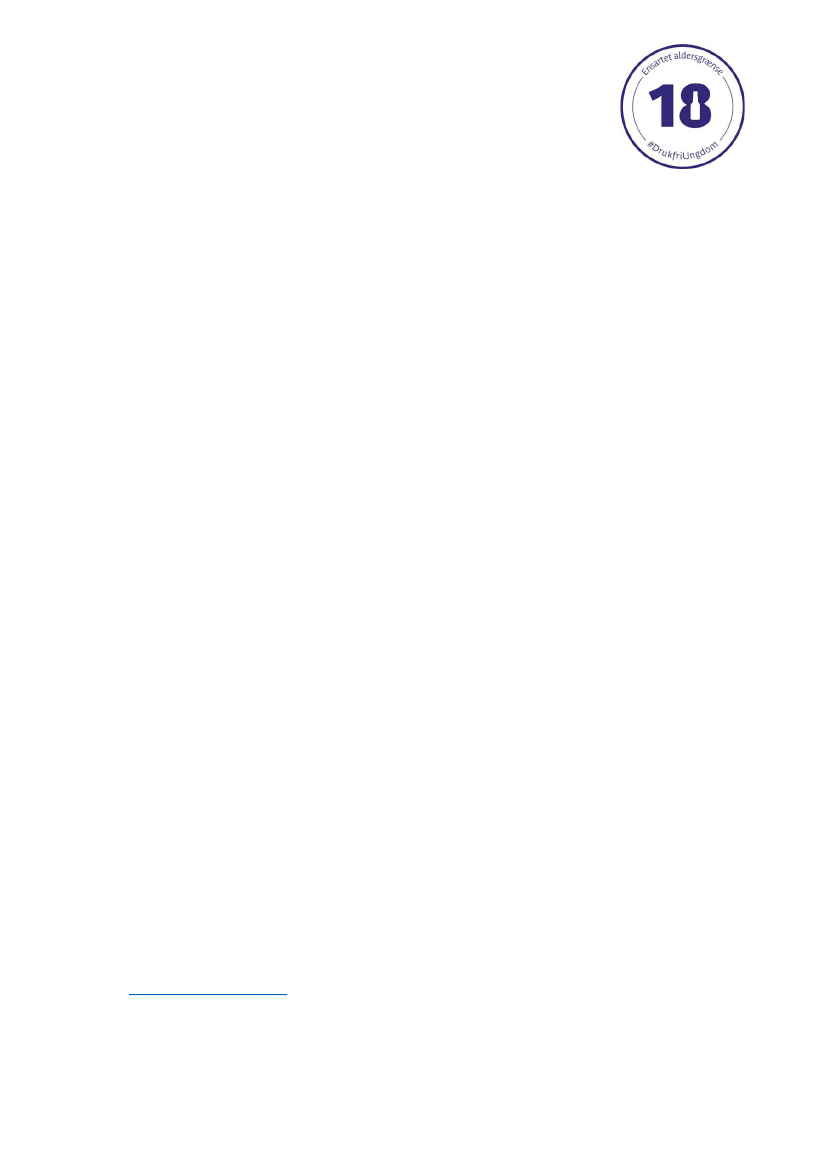
København, 17. november 2020
Forberedende materiale til foretræde for Folketingets Sundhedsudvalg 19. november kl. 16
Ved foretrædet vil repræsentanter fra nogle af organisationerne bag initiativet Drukfri Ungdom
fortælle, hvorfor de 23 organisationer bag initiativet samlet peger på en 18-årsgrænse for salg af al
alkohol, som det vigtigste første skridt til at ændre danske unges alkoholkultur, så den bliver
sundere, tryggere og mere inkluderende.
Drukfri Ungdom er et initiativ fra 23 organisationer, som tæller interesseorganisationer, sundheds-
og børnefaglige organisationer, regioner og kommuner samt brancheforeninger for hhv.
alkoholindustrien og restaurationsbranchen, der samlet opfordrer Folketinget til at vedtage en ny
aldersgrænse på 18 år for salg af al alkohol.
Som forberedelse til foretrædet er her:
•
Drukfri Ungdoms fælles holdningspapir.
•
To grafer fra Vidensråd for Forebyggelse, som professor Morten Grønbæk vil tage
udgangspunkt i på foretrædet. Graferne viser hhv. aldersgrænser for salg af alkohol i
Europa, og hvilken type alkohol, danske unge drikker.
•
Den Europæiske Skolebørnsundersøgelse af Alkohol og Stoffer (ESPAD), der udkom torsdag
den 12. november 2020. Den viser, at danske unge stadig indtager stadig en ærgerlig
førsteplads på de fleste parametre i forhold til alkohol – nemlig rusdrikkeri (fem eller flere
genstande ved en lejlighed, s. 67), fuldskab de seneste 30 dage (s. 47), indtaget mængde
ren alkohol sidst de drak (s. 14 og s. 63), samt opfattelse af, hvor let det er at skaffe alkohol
(s. 37).
•
Undersøgelsen Alkoholforbrug og forekomsten af ulykker og vold blandt unge, som Statens
Institut for Folkesundhed udgav ultimo oktober 2020. Undersøgelsen viser, at unge, som
drikker mest alkohol, har markant større risiko for at komme til skade og ende på
hospitalet.
Hvis Sundhedsudvalgets medlemmer har spørgsmål til Drukfri Ungdom-initiativet før eller efter
foretrædet, er de meget velkomne til at kontakte undertegnede.
De bedste hilsner
Ida Fabricius Bruun
Koordinator, Drukfri Ungdom
E-mail:
Telefon: 29 80 77 66